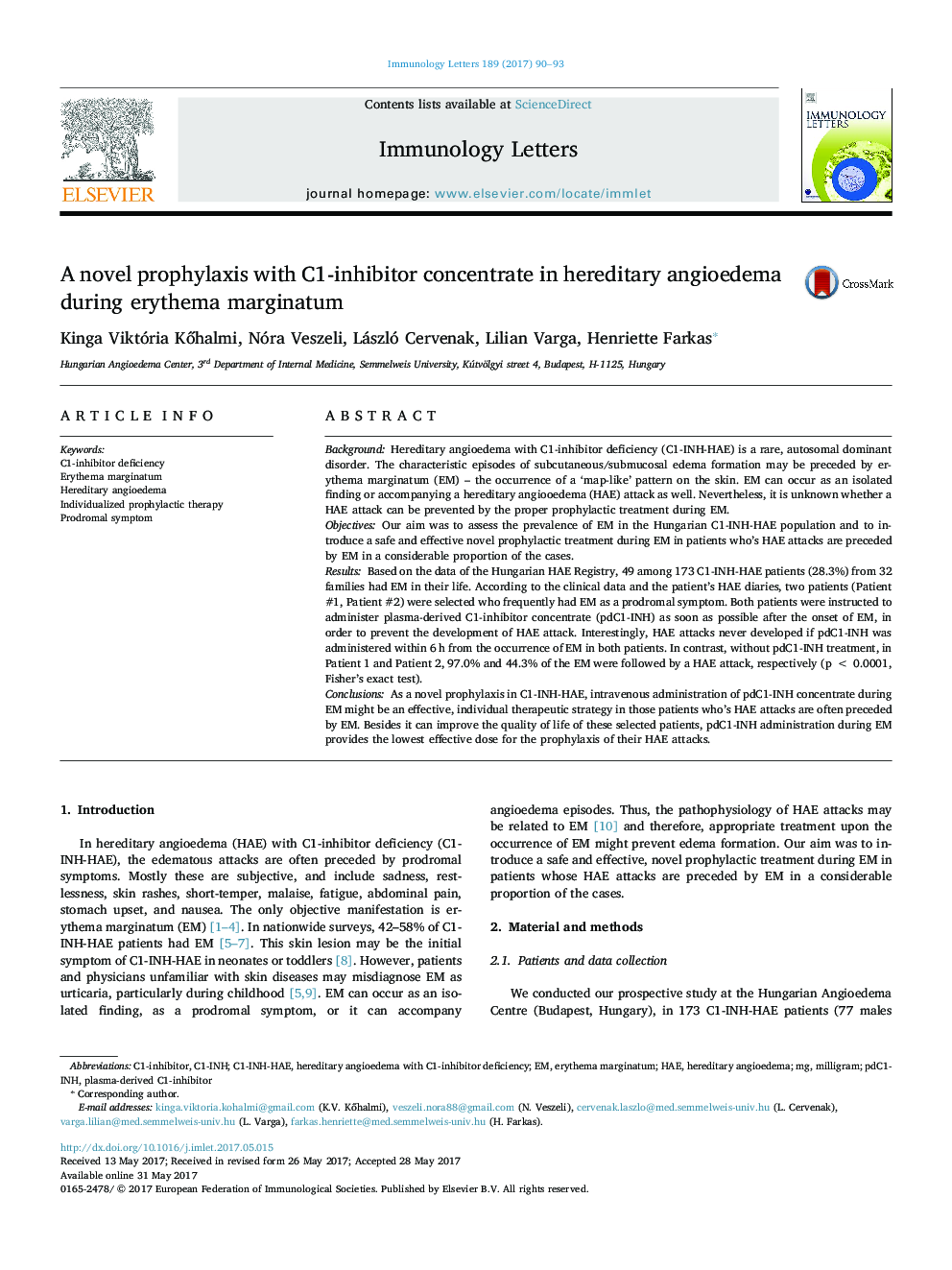| کد مقاله | کد نشریه | سال انتشار | مقاله انگلیسی | نسخه تمام متن |
|---|---|---|---|---|
| 5666671 | 1591537 | 2017 | 4 صفحه PDF | دانلود رایگان |

- The only objective prodromal symptom of C1-INH-HAE is erythema marginatum (EM).
- According to nationwide surveys, 42-58% of C1-INH-HAE patients had EM.
- HAE attack never developed if pdC1-INH concentrate was administered during EM.
- Acute treatment of EM prevented the development of HAE attacks.
- This individual novel therapy was optimized and cost-effective.
BackgroundHereditary angioedema with C1-inhibitor deficiency (C1-INH-HAE) is a rare, autosomal dominant disorder. The characteristic episodes of subcutaneous/submucosal edema formation may be preceded by erythema marginatum (EM) - the occurrence of a 'map-like' pattern on the skin. EM can occur as an isolated finding or accompanying a hereditary angiooedema (HAE) attack as well. Nevertheless, it is unknown whether a HAE attack can be prevented by the proper prophylactic treatment during EM.ObjectivesOur aim was to assess the prevalence of EM in the Hungarian C1-INH-HAE population and to introduce a safe and effective novel prophylactic treatment during EM in patients who's HAE attacks are preceded by EM in a considerable proportion of the cases.ResultsBased on the data of the Hungarian HAE Registry, 49 among 173 C1-INH-HAE patients (28.3%) from 32 families had EM in their life. According to the clinical data and the patient's HAE diaries, two patients (Patient #1, Patient #2) were selected who frequently had EM as a prodromal symptom. Both patients were instructed to administer plasma-derived C1-inhibitor concentrate (pdC1-INH) as soon as possible after the onset of EM, in order to prevent the development of HAE attack. Interestingly, HAE attacks never developed if pdC1-INH was administered within 6 h from the occurrence of EM in both patients. In contrast, without pdC1-INH treatment, in Patient 1 and Patient 2, 97.0% and 44.3% of the EM were followed by a HAE attack, respectively (p < 0.0001, Fisher's exact test).ConclusionsAs a novel prophylaxis in C1-INH-HAE, intravenous administration of pdC1-INH concentrate during EM might be an effective, individual therapeutic strategy in those patients who's HAE attacks are often preceded by EM. Besides it can improve the quality of life of these selected patients, pdC1-INH administration during EM provides the lowest effective dose for the prophylaxis of their HAE attacks.
Journal: Immunology Letters - Volume 189, September 2017, Pages 90-93